March 18 – March 25, 2023
Week Nine of our 32nd Season
This year Aquatic Adventures embarks on its 32nd season of providing our guests the unique opportunity to encounter the North Atlantic humpback whales on their breeding and calving grounds, the Silver Bank. As the season unfolds, we’ll highlight some of the various encounters and experiences of our guests each week. We hope you enjoy following along!
As we get closer to the end of the mating and calving season, the behaviors and anatomy of the whales we encounter on the Silver Bank have evolved. Calves are no longer the timid creatures we once knew. They are larger, stronger and more adventurous. They test their mother’s boundaries and spend much more time exploring their environment while their nurturing parent tries to relax. There is still lots of time left in the mating and calving season on the Silver Bank as whales who have travelled further south to the adjacent banks and shallows make their way back up north, spending significant time here with us on the bank. Some of the whales we had encountered from the beginning of the season have already begun their migration up north to the feeding grounds which results in a heavier concentration of males, leading to intense competition for the opportunity to mate with the remaining females. This time of the season is busy and exciting with every day usually filled with high energy encounters.
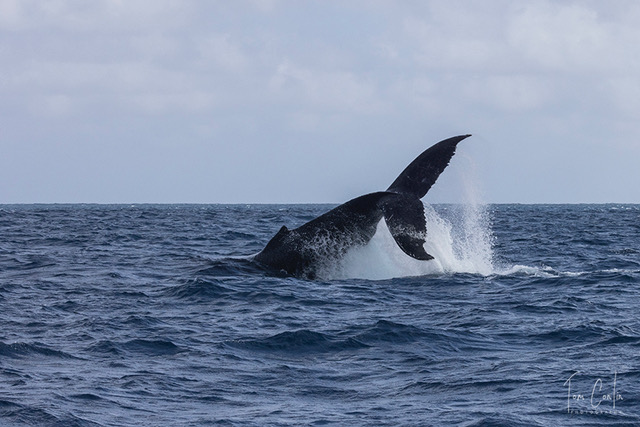
A rowdy group, or competitive group as it is called in other areas, is a collection of two or more whales competing for a female. The point of the competition, of course, is to mate. The male with the most desirable traits, whether that be strength, agility, maneuverability or perhaps some other trait we as humans do not understand but female humpbacks gravitate to, will win the chosen male a chance to continue his genetic line. Females will often appear to “call in” other males by fin slapping, lob tailing or breaching. Once she has convinced enough males that she is worth fighting for, the high energy action begins. Males will dodge one another, blowing bubble streams, breaching on top of one another and making quick decisive turns. The female, leading the group, does not contribute to the fighting but keeps momentum by traveling across the bank, weaving in and out of coral. Our tenders can have a hard time keeping up as some of the bursts of energy are happening at over twelve knots. This time of year the rowdy groups are the rowdiest, as more males join from the surrounding banks. This week both Challenger and Escort were able to join up to watch nine males compete for a single female, sometimes landing right in the middle of all the action. Whales behind, beside and in front of us, swimming under the boat and screaming towards the south, then northeast then south again.
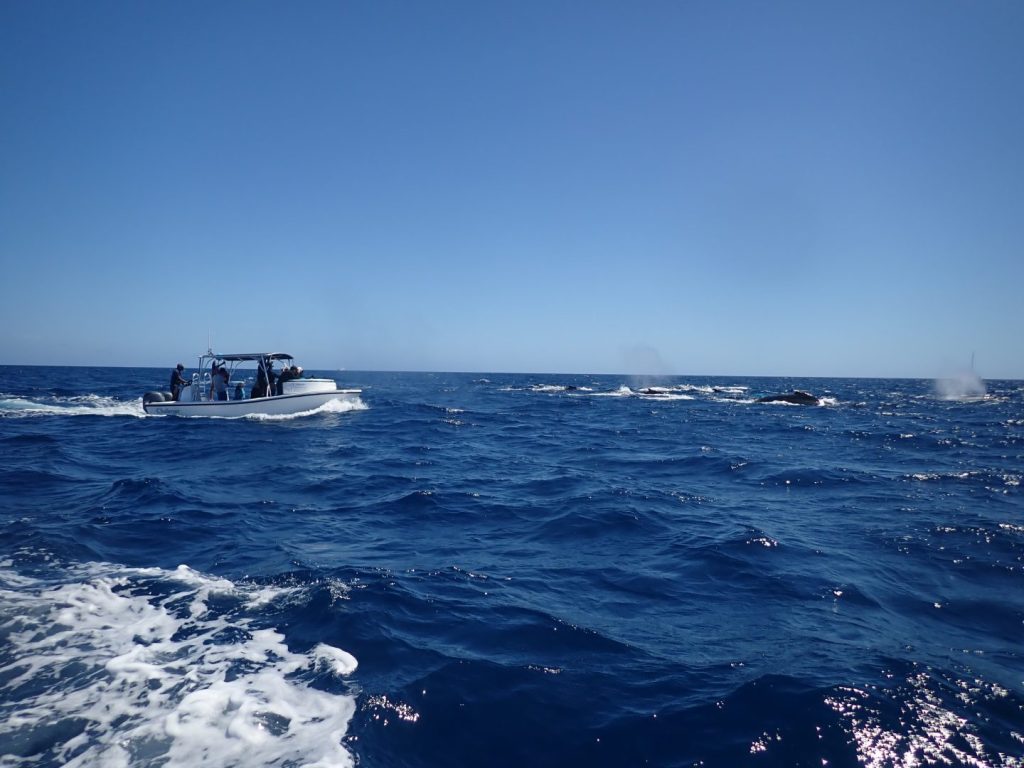
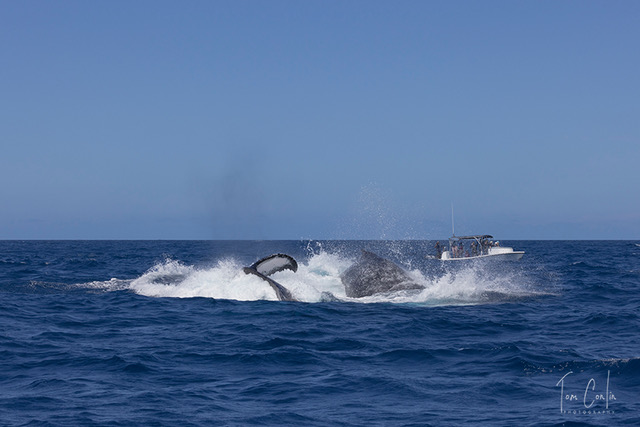
The other noticeable changes on the Silver Bank this time of year are the calves which are growing at a rapid rate, consuming one hundred gallons of milk and growing an inch a day. If a calf was born during the first few weeks of January, by end of March it is on average over fourteen feet in length, a third of its adult size. During a lunch break, a mother and calf circled the Turks & Caicos Explorer II. The pair continued to circle for forty-five minutes, coming closer and closer and hanging around the surface attracting a lot of attention from the guests on board. Of course we couldn’t help ourselves so we cut lunch short, launching our tenders as quickly as possible and seeing if we could possibly get into the water with the two whales. Just as we were pulling away with the tender, a second mother, calf and escort showed up also circling the boat. We noticed the original mother and calf had moved away slightly so Challenger left to see if she had settled. Indeed she had, and not only that but the mother rested at the bottom for over twenty five minutes while her calf swam circles around the guests, going back down to circle around mom and then back up at high speeds for another breath. The calf continued to play like this for the whole afternoon. Perhaps the mother came to the main vessel looking for babysitters so she could finally rest while her calf was distracted.
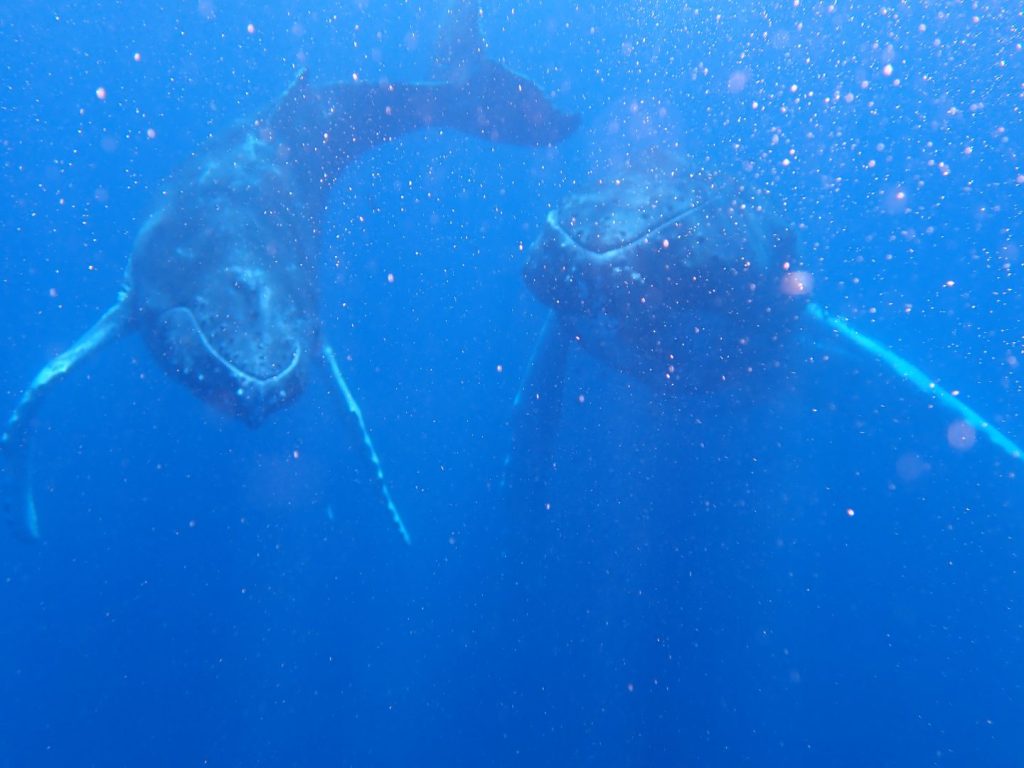
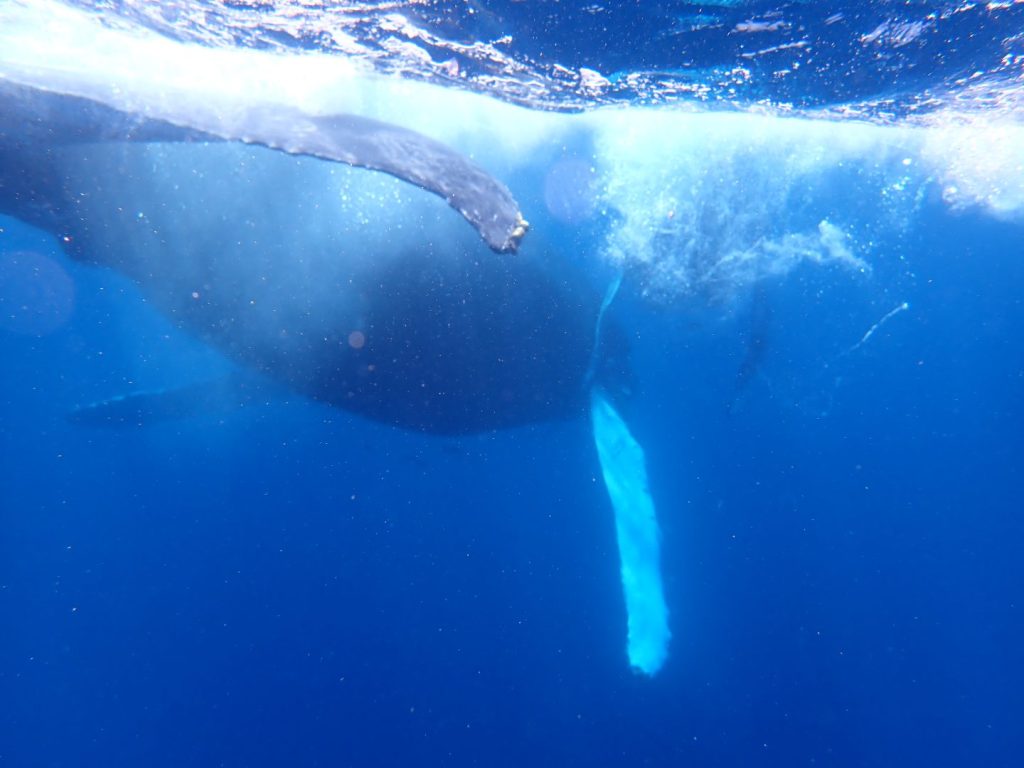
Meanwhile another mother and calf play at the surface near the coral heads. The calf, also being a bit older, played at the surface in front of the guests while the mother rested near by. We had seen this calf for a few weeks now and have been watching her grow. Every week she seems more comfortable with us and now she was showing off. Twisting and turning, slashing her tail, she really did put on quite a show. She then began to tail breach and we decided maybe she was getting a little too excited so we exited the water and watched the action from the surface. It was a good thing too, because soon after the calf began to breach time and time again, followed by the mother lob tailing and spinning head breaching.
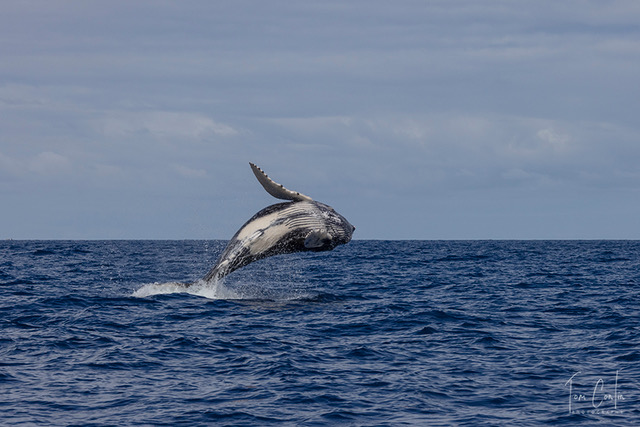
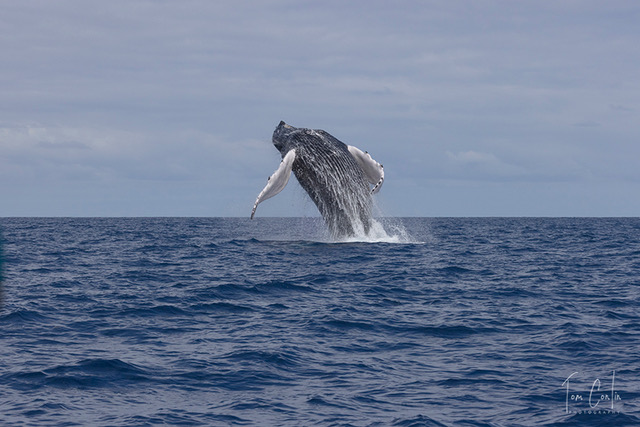
With all this surface activity we were lucky this week to capture many fluke IDs, one of which was a whale we know well and have tracked through Center for Coastal Studies. Her name is Bounce and this year she has had a calf. Another ID was from a whale that hasn’t been spotted since 1979 in Newfoundland, Canada. What an incredible time to be out on the bank, and we still have three weeks to go!!!!
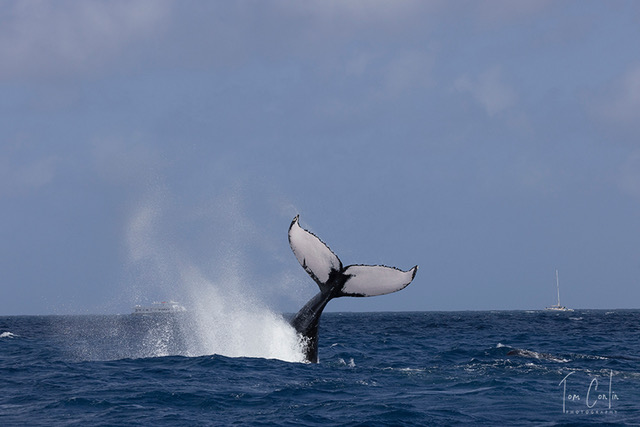
The Aquatic Adventures team hopes that you are as inspired as we are to help sustain the humpback whale population. Through our partnership with the Center for Coastal Studies, we are helping to gain critical information on these charismatic creatures, and to seek ways to protect and preserve them. To find out more about this effort, join their mailing list or to make a donation, large or small, please visit: www.coastalstudies.org/aquaticadventures
We are proud to support SeaLegacy in their efforts to create powerful media to change the narrative around our world’s oceans. Their mission is to inspire the global community to protect our oceans. To learn more about SeaLegacy and help with this important mission, please visit: https://www.sealegacy.org
Thanks to all who have generously donated!
Learn more about Aquatic Adventures here.
Written by: Aquatic Adventures team member Gillian Morin
Edited by: Aquatic Adventures team member Heather Reser
Images: Aquatic Adventures

